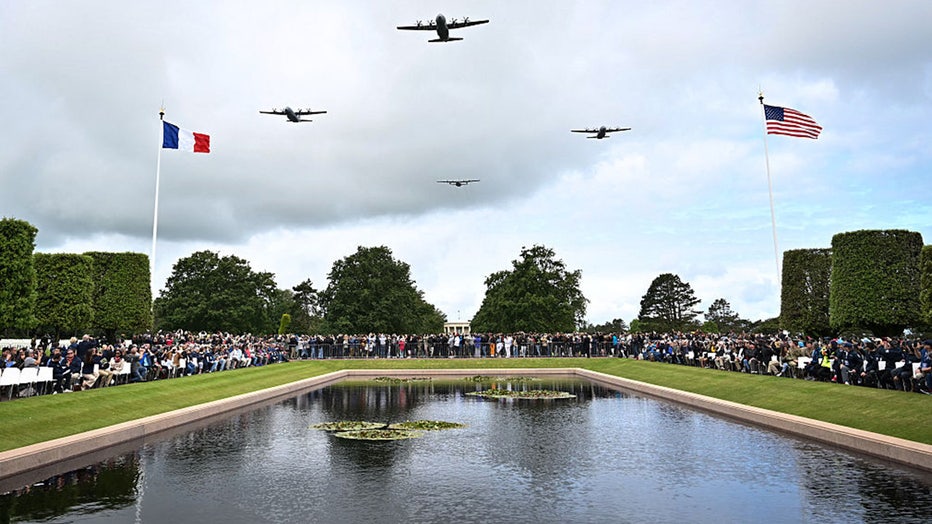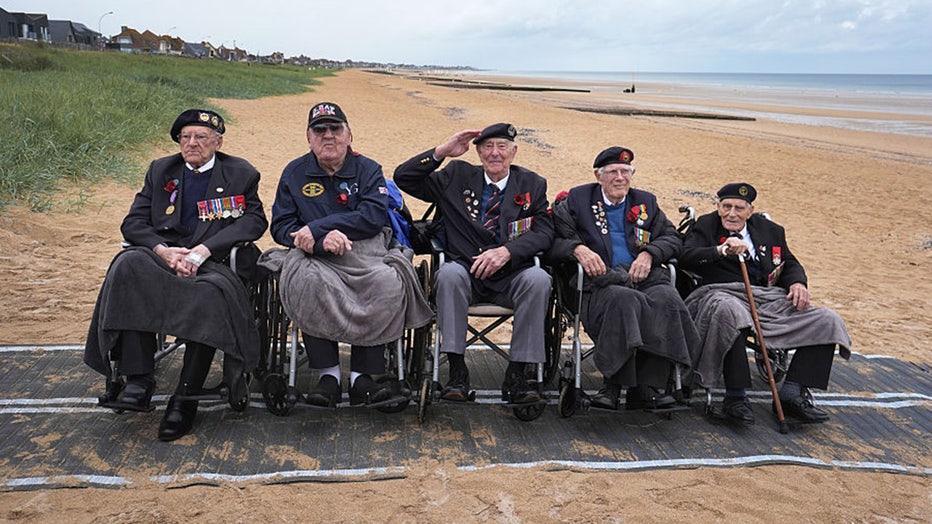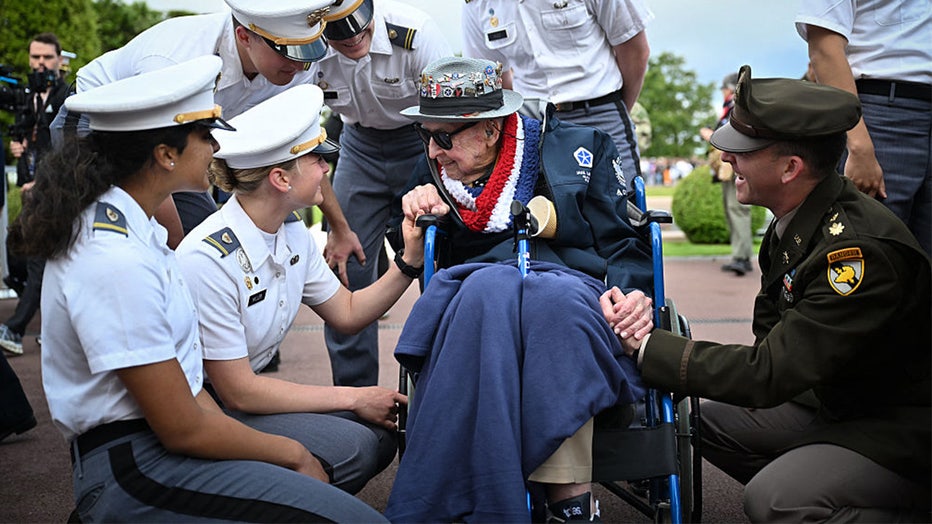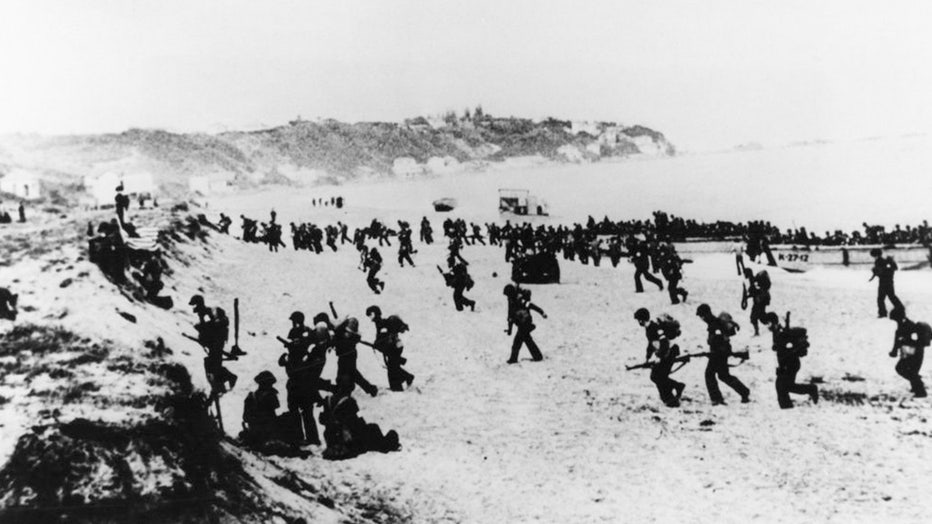Veterans remain central to D-Day anniversary ceremonies
Sec. Hegseth participates in D-Day commemoration
Defense Secretary Pete Hegseth is in Normandy, France, marking the 81st anniversary of D-Day. He’s attending events at the Normandy American Cemetery and Utah Beach, along with leaders from NATO and other countries. Hegseth is also speaking at a NATO defense meeting in Brussels, where he’s stressing the need for member nations to invest 5% of their GDP in defense.
June 6 marks the anniversary of D-Day, the day allied troops stormed the beaches of Normandy and changed the course of World War II.
The invasion was unprecedented in scale and audacity and implemented the largest-ever armada of ships, troops, planes and vehicles to punch a hole in Adolf Hitler’s defenses in Western Europe.
Today, though the D-Day generation of veterans are smaller, they remain a crucial reminder of what June 6 means as they continue to spread the message that they fought so hard for 81 years ago: Freedom is worth defending.

Military aircraft perform a flyover during a memorial ceremony held as part of the 81st anniversary of the World War II D-Day Allied landings in Normandy, at the American Cemetery in Colleville-sur-Mer, north-western France, on June 6, 2025. (Photo b
Remembering the fallen
About 66,143 of the 16.4 million Americans who served in World War II were alive as of 2024, according to statistics from the U.S. Department of Veterans Affairs.

FILE - D-Day veterans, (L-R) Ken Hay, Richard Aldred, Henry Rice, Jim Grant and John Dennet pose for a picture on Sword Beach following the Spirit of Normandy Trust service in Coleville-Montgomery, France, ahead of the 81st anniversary of D-Day on Fr
Dig deeper:
At the Normandy American Cemetery that overlooks Omaha, the resting place for nearly 9,400 American war dead, workers and visitors rubbed sand from the beach onto the white gravestones, so the engraved names stand out.
Wally King, a sprightly 101-year-old, shared a few words at the grave of Henry Shurlds Jr. Shurlds who flew P-47 Thunderbolt fighters like King and was shot down and killed on Aug. 19, 1944.
What they're saying:
When "most veterans from World War II came home, they didn’t want to talk about the war. So they didn’t pass those experiences on to their children and grandchildren," King said.
"In a way, that’s good because there’s enough unpleasantness, bloodshed, agony in war, and perhaps we don’t need to emphasize it," he added. "But the sacrifice needs to be emphasized and celebrated."
Jack Stowe, a 98-year-old who served in the Navy, shared that he still receives "the sweetest letters" from kids he has met on previous trips.
"The French people here, they’re so good to us … they want to talk to us, they want to sit down and they want their kids around us," he said.

Attendees share a laugh with 102-year-old WWII and D-Day Landing US veteran Jake Larson, also known as "Papa Jake", before a memorial ceremony held as part of the 81st anniversary of the World War II D-Day Allied landings in Normandy, at the America
Jake Larson, 102, survived machine gunfire while storming Omaha beach on D-Day.
"We are the lucky ones … They had no family. We are their family. We have the responsibility to honor these guys who gave us a chance to be alive," Larson said.
What does "D" in D-Day mean?
What does "D" stand for in D-Day? It depends on who you ask.
The backstory:
Some say it stands for designated day, decision day, doomsday or even death day, according to the U.S. military.
Others also said it merely stands for "Day," as in Day-Day.
There have been other instances in history which utilized D-Day as a coded designation for the day of any important invasion or military operation, the U.S. military said.
Referencing Stephen Ambrose’s book, "D-Day, June 6, 1944: The Climactic Battle of World War II," the U.S. Army’s first use of D-Day was in 1918.
"For military planners (and later historians), the days before and after a D-Day were indicated using plus and minus signs: D-4 meant four days before a D-Day, while D+7 meant seven days after a D-Day," according to the U.S. Army website.
An unknown person allegedly wrote to General Dwight D. Eisenhower, the Allied supreme commander for Operation Overlord, and asked what the "D" meant.
His executive assistant at the time, Brigadier Gen. Robert Schultz answered:
"General Eisenhower asked me to respond to your letter. Be advised that any amphibious operation has a 'departed date'; therefore the shortened term 'D-Day' is used," the Army’s website reads.

FILE - Allied US troops stream up from landing boats and set off inland from Surcouf near Aïn Taya in Algeria on the Vichy-French hold North African coast during World War II 08 November 1942. (Photo by -/AFP via Getty Images)
Where and when did D-Day take place?
The sea landings started at 6:30 a.m., just after dawn, targeting five code-named beaches: Utah, Omaha, Gold, Juno, Sword. The operation also included actions inland, including overnight parachute landings on strategic German sites and U.S. Army Rangers scaling cliffs to take out German gun positions.
By the numbers:
Around 11,000 Allied aircraft, 7,000 ships and boats, and thousands of other vehicles were involved.
How many people died on D-Day?
A total of 4,414 Allied troops were killed on D-Day itself, including 2,501 Americans. More than 5,000 were wounded.
In the ensuing Battle of Normandy, 73,000 Allied forces were killed and 153,000 wounded. The battle — and especially Allied bombings of French villages and cities — killed around 20,000 French civilians.
The exact German casualties aren’t known, but historians estimate between 4,000 and 9,000 men were killed, wounded or missing during the D-Day invasion alone. About 22,000 German soldiers are among the many buried around Normandy.
The Source: Information for this article was taken from previous reporting by The Associated Press, FOX News and previous reporting by FOX Local. This story was reported from Los Angeles.

